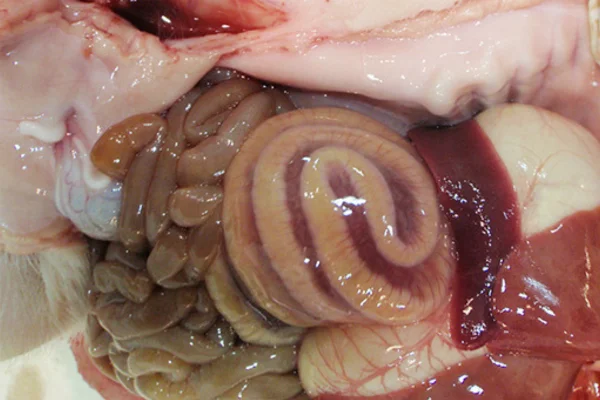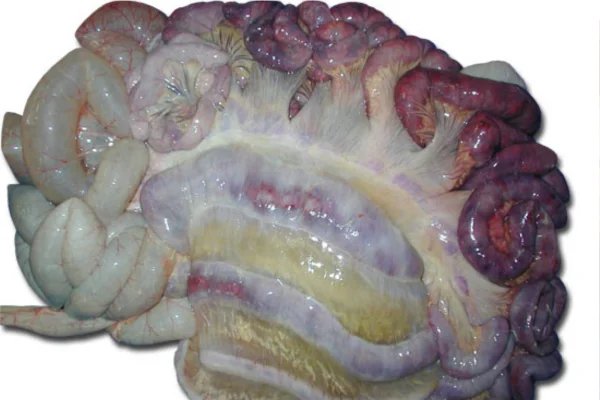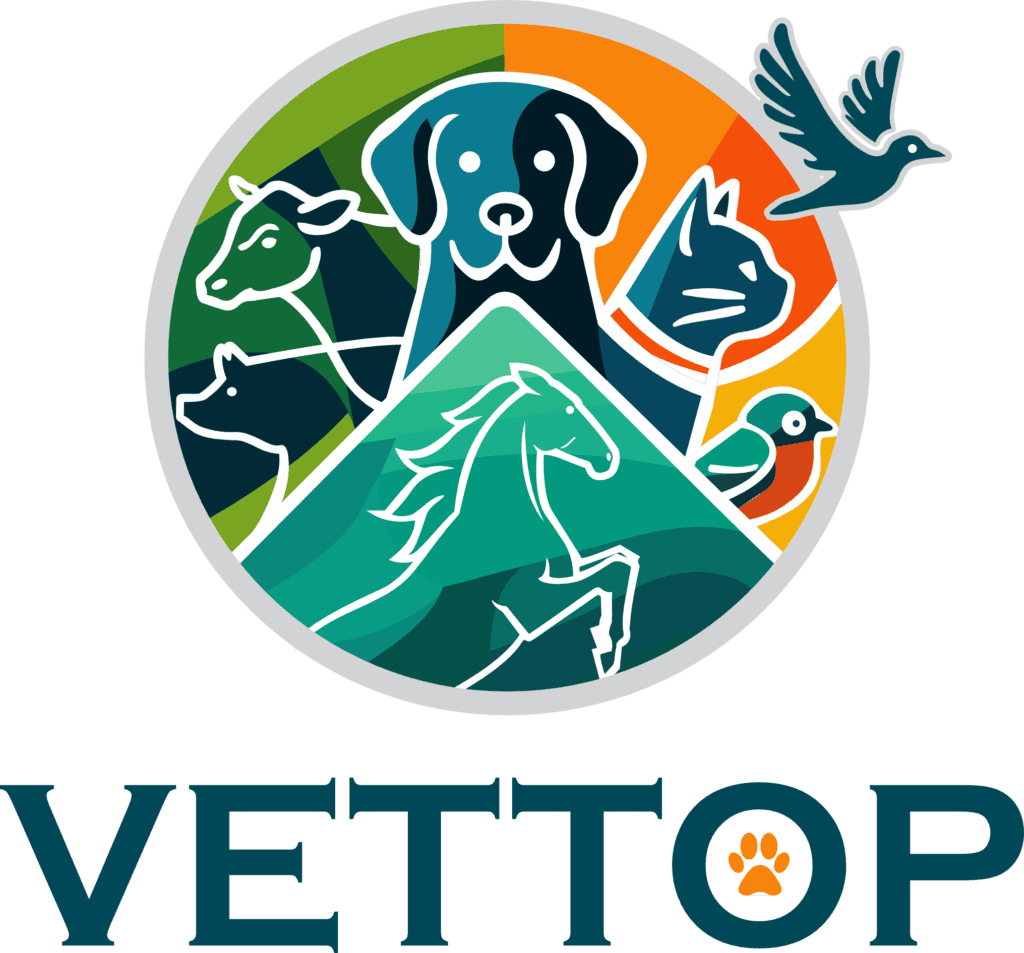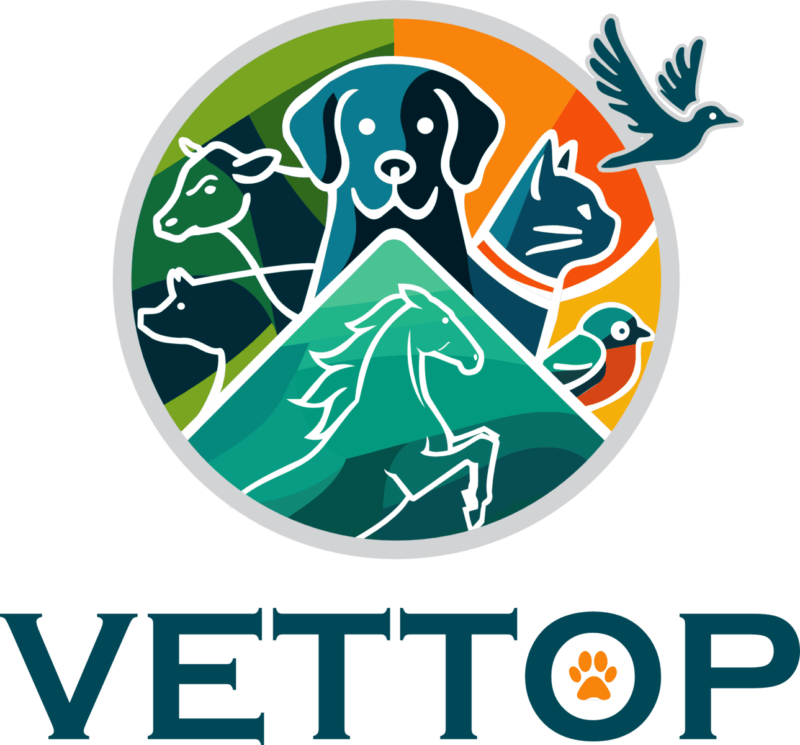Swine Clostridiosis:
Understanding the Disease and Its Impact on Pig Farming
Swine Clostridiosis is an infectious disease caused by bacteria of the genus Clostridiumthe species being Clostridium perfringens one of the most prevalent in pigs. This condition is of great importance in pig farming, not only because of the direct damage to animal health, but also because of the significant economic losses it can cause. Commonly associated with enteritis, Clostridiosis especially affects newborn piglets and can result in high mortality when not treated properly. In this article, we will explore the most critical aspects of this disease, from its etiology to prevention and control measures.
The Causative Agent: Clostridium perfringens
O Clostridium perfringens is a gram-positive, anaerobic, spore-forming bacterium that can be found naturally in the environment and in the gastrointestinal tract of various animals, including pigs. There are five different types of Clostridium perfringens (A, B, C, D and E), classified based on the toxins they produce. Of these, types A and C are the most commonly associated with enteric diseases in pigs.
- Type A: Mainly associated with mild cases of enteritis and diarrhea.
- Type C: More virulent, this type is responsible for causing necrotic enteritis, a severe form of the disease that can lead to the sudden death of piglets.
The ability to Clostridium perfringens in producing toxins is what makes the infection so dangerous. The alpha and beta toxins are mainly responsible for damaging the intestine, resulting in necrosis and severe inflammation of the intestinal walls.
Contents
Transmission and Epidemiology
Transmission of Swine Clostridiosis occurs largely through the ingestion of spores of the bacteria present in the contaminated environment, which can include feces, soil, water and food. Newborn piglets are especially susceptible, due to their still developing immunity and less established intestinal flora.
Factors such as inadequate hygiene, ineffective management and high population density on farms can increase the risk of outbreaks. In addition, the presence of stress factors, such as sudden changes in temperature and weaning, can predispose animals to infection.
Symptomatology: Recognizing the Signs of Clostridiosis
The clinical signs of Swine Clostridiosis vary according to the type of Clostridium perfringens involved and the severity of the infection. In general, symptoms can include:
- Acute diarrhea: Often hemorrhagic, especially in infections caused by type C.
- Abdominal pain: Manifested in the animals' restlessness and discomfort.
- Dehydration: Consequence of intense diarrhea, leading to weakness and rapid weight loss.
- High mortality: In severe outbreaks, high mortality can be observed among piglets, especially in the first few weeks of life.
Necrotic enteritis, one of the most severe forms of the disease, is characterized by necrosis of the intestinal walls, leading to a rapid deterioration in the animal's general condition and often sudden death.

Diagnosis: How to Identify the Disease?
The diagnosis of Swine Clostridiosis is based on a combination of clinical signs, herd history and laboratory tests. Necropsy of affected animals can reveal characteristic lesions in the intestine, such as necrosis and hemorrhage, especially in the small intestine.
To confirm the diagnosis, isolation and identification of the Clostridium perfringens in samples of feces or intestinal tissue are essential. Specific tests to detect the toxins produced by the bacteria can also be carried out, with the beta toxin, associated with type C, being of particular interest in severe cases.
Treatment and Management of Swine Clostridiosis
Treatment for swine clostridiosis must be quick and effective in order to minimize losses. The use of antibiotics is the main form of treatment, with drugs such as penicillin and metronidazole being commonly indicated. However, the choice of antibiotic must be based on sensitivity tests, due to the possibility of bacterial resistance.
In addition to drug treatment, proper management is crucial to controlling the disease. This includes improving hygiene conditions, reducing stress on the animals and implementing management practices that minimize the piglets' exposure to risk factors.
- Hygiene and disinfection: Keeping the environment clean and regularly disinfecting the facilities are essential measures to reduce the bacterial load.
- People and equipment traffic control: Limiting the access of people and equipment to production areas can prevent the introduction of new pathogens.
- Nutritional Management: Proper nutrition, including probiotic supplementation, can help stabilize piglets' intestinal flora, making them more resistant to infections.
Prevention: The Best Strategy Against Clostridiosis
Preventing Swine Clostridiosis is the most effective approach to avoiding outbreaks and reducing the associated economic losses. The main preventive strategies include:
- Vaccination: There are vaccines available against Clostridium perfringens type C, which can be administered to pregnant sows to provide passive immunity to piglets through colostrum.
- Colostrum management: Ensuring that piglets receive quality colostrum in the first few hours of life is essential for strengthening the immune system and preventing infections.
- Biosafety: Implementing strict biosecurity measures, such as visitor control and vehicle disinfection, helps to minimize the risk of introducing and spreading the bacteria on the farm.
- Continuous monitoring: Constantly monitoring the health of the herd and responding quickly to any sign of disease is crucial to controlling Clostridiosis.

Economic Impact of Swine Clostridiosis
Swine Clostridiosis can cause significant economic losses, especially on large farms. Piglet mortality, the need for drug treatments and management interventions increase production costs, while weight loss and poor feed conversion in affected animals can reduce profitability.
In addition, recurrent outbreaks of the disease can affect the farm's reputation and make it difficult to sell the animals. That's why investing in preventive measures and proper management is essential to maintaining the health of the herd and ensuring the economic viability of production.
Final considerations
Swine Clostridiosis is a disease that, despite being well known, still represents a significant challenge for pig farming. The resistant and virulent nature of Clostridium perfringensThis, together with the environmental and management conditions that favor its spread, calls for an integrated approach to disease control and prevention.
In-depth knowledge of the causative agents, risk factors and management strategies is fundamental to protecting the herd and avoiding the devastating consequences of an outbreak. Through strict management practices, vaccination and continuous monitoring, it is possible to minimize the impacts of Swine Clostridiosis and guarantee the health and productivity of pigs.








